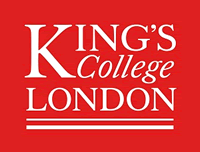Prof A Tucker, Prof D Jiang
No more applications being accepted
Funded PhD Project (European/UK Students Only)
About the Project
A fully funded PhD (Home/EU) offered in the field of Developmental Biology based in the Centre for Craniofacial and Regenerative Biology, a King’s College London Centre of Excellence. The centre combines developmental biology with research in the fields of regeneration, stem cell biology and tissue engineering.
The project combines the expertise of developmental biologist and Cheryl Tickle medal winner Prof Abigail Tucker, with acclaimed ear Surgeon, Prof Dan Jiang, to tackle problems associated with hearing loss.
Project details:
The stapes is the smallest bone in the body but plays a crucial role in hearing, transmitting sounds from the middle ear to the inner ear via the oval window. In 1 in 200 people the stapes can become fixed in place in the oval window, hindering movement and the transfer of sound, resulting in hearing loss. This is known as otosclerosis.
Here we aim to investigate how the stapes develops, what happens in cases of abnormal stapes/oval window formation, and the mechanisms that normally prevent the stapes becoming fixed. If we understand why and how otosclerosis occurs we may in future be able to halt and correct identified problems by targeted addition of small molecule inhibitors/stimulators to prevent further ossification of the annular ligament or selectively stimulate bone removal in this area. This could provide simple and effective treatments for otosclerosis as an alternative to the current invasive surgical options or permanent reliance on hearing aids. This research represents the start of a long-term pathway to achieve this goal.
In this application we will concentrate on the mouse as a model. We will look at mouse mutants that have defective formation/bone remodelling (defects in osteoclast cells) to identify the roles of key signalling pathways. We will also use culture methods to manipulate signalling pathways in the ear in a dish, where we can watch the changes that occur in the ear.
Funding Notes
Funded by Action on Hearing Loss for 3 years, Home/EU students. Start date October 2017
This project is currently open for applicants: please send initial enquiries to [Email Address Removed]
References
Thompson, H. Tucker , A.S. (2013). Dual origin of the epithelium of the middle ear. Science 339, 1453-1456. PMID:23520114

 Continue with Facebook
Continue with Facebook

